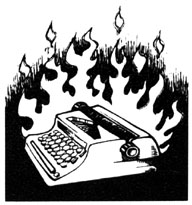Black demonstrators who were busted during New York City’s Black
Lives Matter rallies in late May and early June were four times more likely to
be charged with felonies than white demonstrators.
According to stats provided by the NYPD to New York State Attorney
General Letitia James, 15.66 percent of the 808 black demonstrators who were
arrested in New York City between May 28th and June 7th were charged with
felonies, while only 3.47 percent of the 927 white protestors arrested were
similarly charged. The statistics come from the AG’s preliminary report on the NYPD’s
response to the marches and rallies that spilled into the streets after the Minneapolis
police killed George Floyd on May 25th for the purported crime of
trying to pass a counterfeit 20 dollar bill.
The report suggests that the numbers of felony charges (for
reasons the report does not explain, the percentages do not yield whole numbers)
might be skewed by events on May 31st and June 1st, when some stores in
Midtown and the Bronx were broken into and looted. On those nights, 130 of the
more than 600 people arrested were charged with felonies. Nonetheless, the
report notes, many of the damaged and plundered stores were not on the routes
of Black Lives Matter marches and therefore demonstrators were likely not
involved in those criminal activities.
These statistics generally corroborate the problem that
brought demonstrators to the streets: that law enforcement agencies treat Black
people differently than white people and that Black people continually face harsh
and sometimes deadly force when confronted by police.
The felony charges brought against demonstrators included
burglary, assault, rioting, criminal possession of stolen property, and
criminal mischief. These same crimes could also be charged as misdemeanors:
criminal possession of stolen property, resisting arrest, rioting, and
trespassing. The implication is that white demonstrators were charged with lower level offenses while Black demonstrators received
more severe charges.
The report also showed that demonstrators were four times
more likely to get arrested in Manhattan than elsewhere in the city. Almost ¾
of the 2,087 arrests the NYPD made during those 11 days and nights of marching
and chanting were in Manhattan. The NYPD arrested approximately 350 people at
demonstrations in Brooklyn and 250 in the Bronx. The report does not contain any specifics about arrests at demonstrations in Queens and Staten Island.
The AG’s report does not reveal important facts such as how many of NYPD’s 36,000
officers were put to work policing the protests, how much overtime was
involved in the police work, nor how many times the NYPD pepper sprayed demonstrators, beat
protestors with batons, or kettled demonstrators (this controversial NYPD tactic involves
corralling people in places where they cannot comply with orders to disperse
and then arresting them for failure to disperse.)
In the report, Attorney General James offers a series of
recommendations for reforms in policing, including changing the NYPD’s rules on
the use of force, creating a statewide police certification program, and
decriminalizing certain minor offenses, but does not engage the protestors’ principal
demand that politicians defund the police.





No comments:
Post a Comment